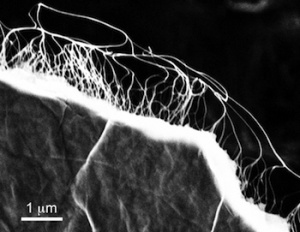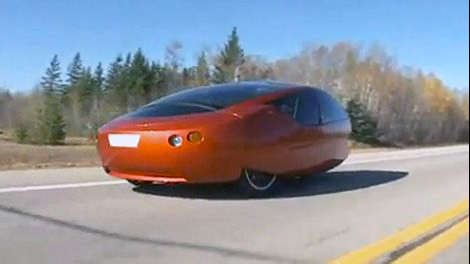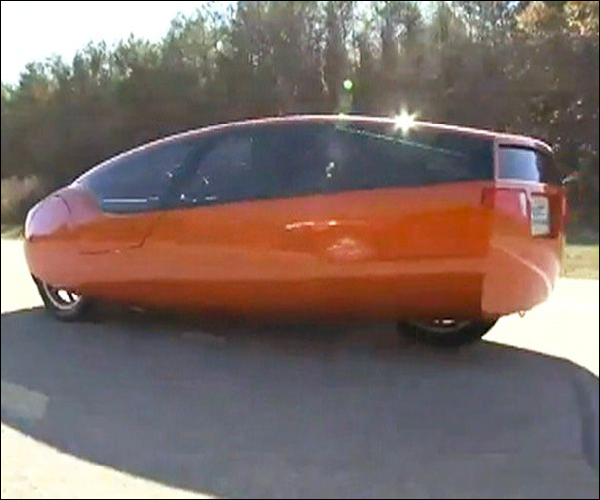An Aug. 28, 2017 news item on Nanotechnology Now features news about nanoparticles and the environment in São Paulo, Brazil,
When ethanol prices at the pump rise for whatever reason, it becomes economically advantageous for drivers of dual-fuel vehicles to fill up with gasoline. However, the health of the entire population pays a high price: substitution of gasoline for ethanol leads to a 30% increase in the atmospheric concentration of ultrafine particulate matter, which consists of particles with a diameter of less than 50 nanometers (nm).
An Aug. 23, 2017 Fundação de Amparo à Pesquisa do Estado de São Paulo (The São Paulo Research Foundation [FAPESP]) press release, which originated the news item, explains further,
The phenomenon was detected in São Paulo City, Brazil, in a study supported by FAPESP and published in July 2017 in Nature Communications.
“These polluting nanoparticles are so tiny that they behave like gas molecules. When inhaled, they can penetrate the respiratory system’s defensive barriers and reach the pulmonary alveoli, so that potentially toxic substances enter the bloodstream and may increase the incidence of respiratory and cardiovascular problems,” said Paulo Artaxo, Full Professor at the University of São Paulo’s Physics Institute (IF-USP) and a co-author of the study.
Levels of ultrafine particulate matter in the atmosphere are neither monitored nor regulated by environmental agencies not only in Brazil but practically anywhere in the world, according to Artaxo. The São Paulo State Environmental Corporation (CETESB), for example, routinely monitors only solid particles with diameters of 10,000 nm (PM10) and 2,500 nm (PM2.5) – as well as other gaseous pollutants such as ozone (O3), carbon monoxide (CO) and nitrogen dioxide (NO2).
“Between 75% and 80% of the mass of the nanoparticles we measured in this study corresponds to organic compounds emitted by motor vehicles – carbon in different chemical forms. What these compounds are exactly and how they affect health are questions that require further research,” Artaxo said.
He added that a consensus is forming in the United States and Europe based on recent research indicating that these emissions are a potential health hazard and should be regulated. Several US states, such as California, have laws requiring a 20%-30% ethanol blend in gasoline, which also helps reduce emissions of ultrafine particulate matter.
Methodology
The data analyzed in the study were collected during the period of January-May 2011, when ethanol prices fluctuated sharply compared with gasoline prices, owing to macroeconomic factors such as variations in the international price of sugar (Brazilian ethanol is made from sugarcane).
Collection was performed at the top of a ten-story building belonging to IF-USP in the western part of São Paulo City. According to Artaxo, the site was chosen because it is relatively distant from the main traffic thoroughfares so that the aerosols there are “older” in the sense that they have already interacted with other substances present in the atmosphere.
“Generally speaking, the pollution we inhale every day at home or at work isn’t what comes out of vehicular exhaust pipes but particles already processed in the atmosphere,” he explained. “For this reason, we chose a site that isn’t directly impacted by primary vehicle emissions.”
The study was conducted during Joel Ferreira de Brito’s postdoctoral research, which Artaxo supervised. The model used to analyze the data was developed by Brazilian economist Alberto Salvo, a professor at the National University of Singapore and first author of the article. Franz Geiger, a chemist at Northwestern University in the US, also collaborated.
“We adapted a sophisticated statistical model originally developed for economic analysis and used here for the first time to analyze the chemistry of atmospheric nanoparticles,” Artaxo said. “The main strength of this tool is that it can work with a large number of variables, such as the presence or absence of rainfall, wind direction, traffic intensity, and levels of ozone, carbon monoxide and other pollutants.”
Analyses were performed before, during and after a sharp fluctuation in ethanol prices leading consumers to switch motor fuels in São Paulo City. While no significant changes were detected in levels of inhalable fine particulate matter (PM2.5 and PM10), the study proved in a real, day-to-day situation that choosing ethanol reduces emissions of ultrafine particles. To date, this phenomenon had only been observed in the laboratory.
“These results reinforce the need for public policies to encourage the use of biofuels, as they clearly show that the public lose in health what they save at the pump when opting for gasoline,” Artaxo said.
In São Paulo, a city with 7 million motor vehicles and the largest urban fleet of flexible-fuel cars, it would be feasible to run all buses on biofuel. “We have the technology for this in Brazil – and at a competitive price,” he said.
The fact that the city’s bus fleet still depends on diesel, Artaxo warned, creates an even worse health hazard in the shape of emissions of black carbon, one of the main components of soot and a pollutant that contributes to global warming. Alongside electricity generation, the transportation sector is the largest emitter of pollutants produced by the burning of fossil fuels.
For Artaxo, incentives for electric, hybrid or biofuel vehicles are vital to reduce greenhouse gas emissions. “By incentivizing biofuels, we could solve several problems at once,” he said. “We could combat climate change, reduce harm to health and foster advances in automotive technology by offering a stimulus for auto makers to develop more economical and efficient cars fueled by ethanol.”
Here’s a link to and a citation for the paper,
Reduced ultrafine particle levels in São Paulo’s atmosphere during shifts from gasoline to ethanol use by Alberto Salvo, Joel Brito, Paulo Artaxo, & Franz M. Geiger. Nature Communications 8, Article number: 77 (2017) doi:10.1038/s41467-017-00041-5 Published online: 18 July 2017
This paper is open access.


